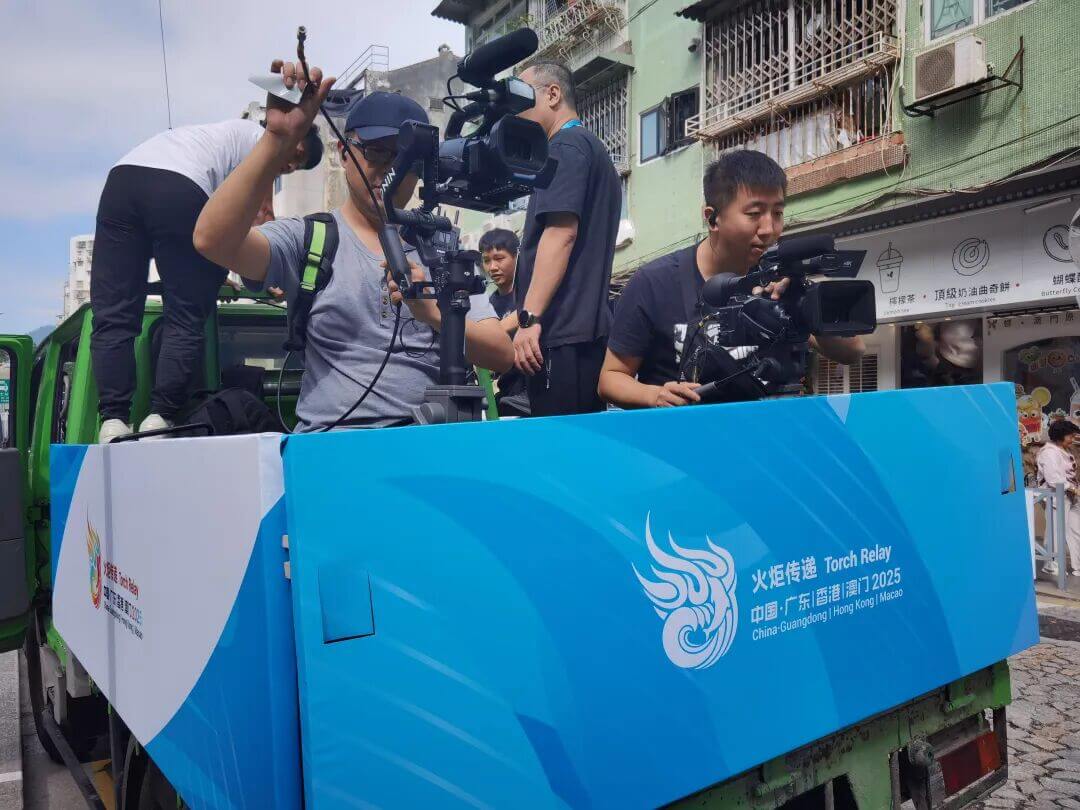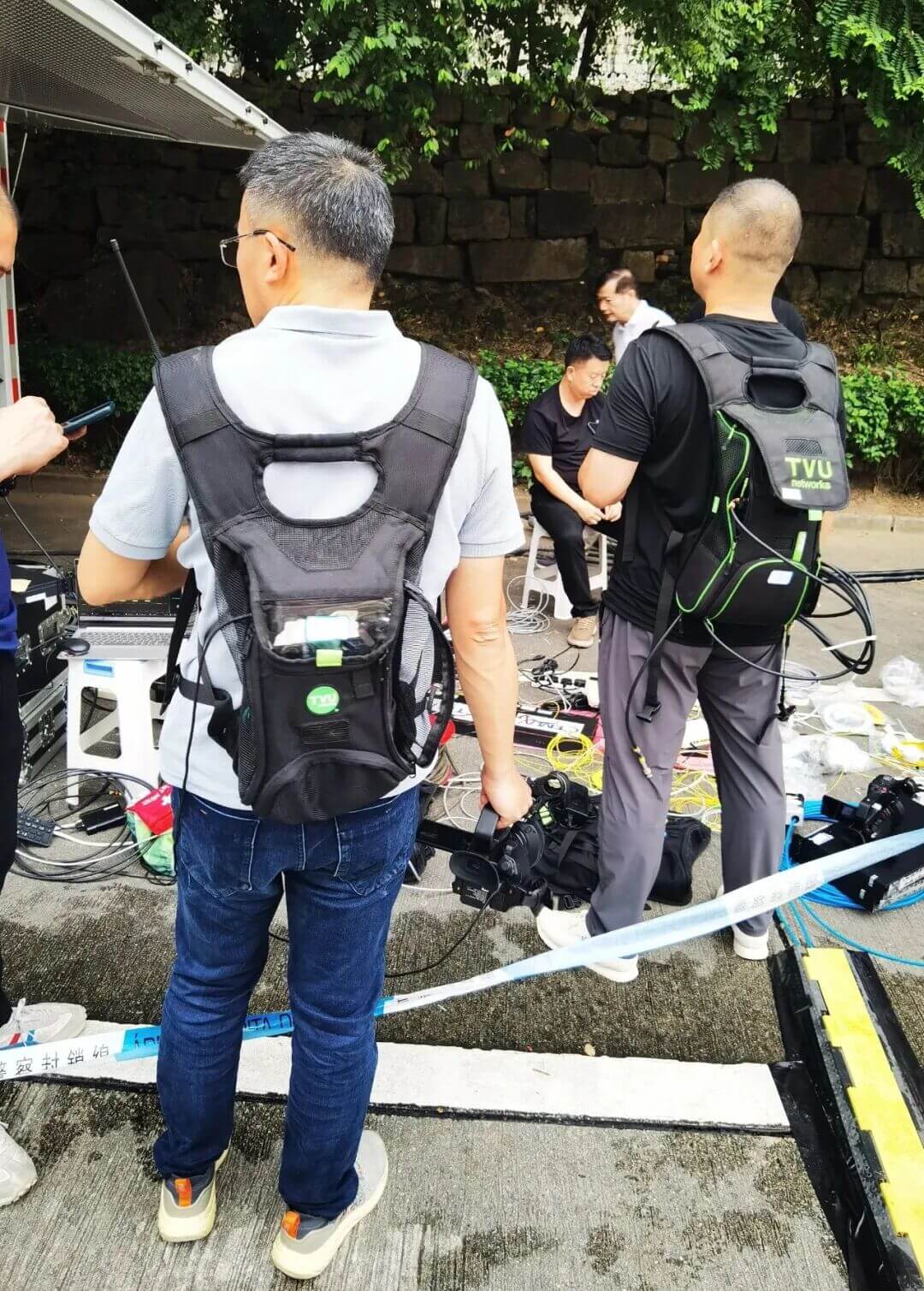
Broadcasting History: How 20+ Cameras Captured Four Cities Simultaneously for China’s National Games Torch Relay
TVU Networks' mobile transmission technology enabled real-time broadcast switching across 20+ cameras in four cities, proving that complex multi-location live productions no longer require traditional satellite infrastructure.
View Related ProductsCUPERTINO, Calif., Nov. 5, 2025 — On November 2, 2025, TVU Networks and Fujian Media Group (FMG) delivered uninterrupted coverage of the 15th National Games torch relay across Hong Kong, Macau, Guangzhou, and Shenzhen—one of the most technically complex live sports broadcasts in recent memory.
This wasn’t separate broadcasts stitched together in post-production. Every moment aired live, in real-time, as directors seamlessly switched between 20+ camera feeds spanning four major cities across China’s Greater Bay Area.

The Challenge: Broadcasting Across Borders, Vehicles, and Networks
Traditional broadcast infrastructure struggles with mobility. Fixed transmission points and satellite uplinks work beautifully for stadium coverage. They fail when cameras are mounted on ferries, open-top buses, drones, and autonomous vehicles moving through dense urban environments.
FMG faced compounding technical obstacles:
Multi-location coordination at scale. Four cities required simultaneous real-time coverage with instant switching among 20+ active camera feeds.
Extreme mobility scenarios. Camera crews operated from constantly moving platforms: ferries, buses, autonomous vehicles, and even a robot named “Kuafu.”
Unpredictable network conditions. Urban canyons, harbor crossings, and dense crowds created challenging wireless environments with continuously fluctuating network quality.
Zero tolerance for interruption. Live broadcasting leaves no room for buffering, dropouts, or quality degradation.

The Technology: TVU One’s Real-Time Networks Bonding Architecture
FMG deployed over 20 TVU One units—compact, battery-powered encoders that traveled with camera crews on every moving vehicle.
Intelligent Network Bonding (ISX Technology)
TVU’s Inverse StatMux (ISX) technology actively transmits across all available connections simultaneously—5G, 4G LTE, multiple carriers, even satellite. The system fragments each video stream into thousands of data packets, intelligently routing each through whichever network path offers the best performance at that microsecond. If one network drops, other paths compensate instantly.
Adaptive Compression and Error Correction
H.265/HEVC variable bitrate encoding with Forward Error Correction constantly analyzes bandwidth and adjusts compression on the fly. When networks strengthen, bitrate increases. When conditions deteriorate, intelligent compression maintains broadcast standards without visible artifacts.
Sub-Second Latency and Frame Synchronization
TVU One’s glass-to-glass latency of under one second allowed production teams to operate as if all 20+ cameras were in the same stadium rather than scattered across hundreds of kilometers. Equally critical, TVU’s Timelock technology delivered frame-accurate synchronization across all camera feeds, ensuring that the torch relay’s progress appeared consistent across all four cities. This eliminated timecode drift between locations, making it significantly easier for directors to switch between feeds in real-time—knowing that every camera showed the exact same moment, regardless of whether it was transmitting from Hong Kong’s harbor or Guangzhou’s streets.

The Broadcast: Four Cities, One Story
At 9:00 AM, FMG’s distributed production went live across all locations simultaneously. Shenzhen opened with a robot passing the torch to a human athlete. Hong Kong delivered ferry-mounted cameras crossing Victoria Harbour and open-top bus footage through urban canyons. Macau wound through narrow alleyways and Portuguese architecture. Guangzhou showcased self-driving cars through modern infrastructure.
Directors switched seamlessly between cities and angles without a single quality drop. The broadcast reached nationwide audiences through CCTV-5, CCTV-13, Shenzhen TV, and over ten digital platforms.
A New Broadcasting Blueprint
This production proved that mobile crews with compact encoders can deliver broadcast quality from anywhere cellular networks reach—no satellite trucks or dedicated fiber required. Ferries, buses, drones, and autonomous vehicles are now standard production venues. Low latency with strict frame synchronization enables real-time coordination across distributed locations, fundamentally changing how large-scale productions are structured.
The four-city torch relay establishes a blueprint showing that ambitious storytelling need not bow to technical limitations. The future of live sports coverage is mobile, distributed, and limited only by imagination rather than infrastructure.